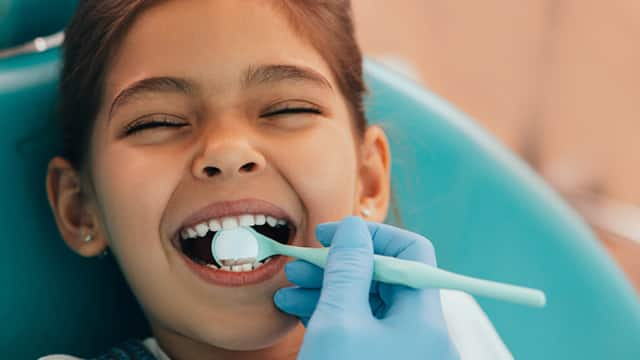What Is an Expander?
The expander is most commonly recommended when there is a crossbite between the two arches or if there’s not enough space for permanent teeth to come in correctly. It works best for children and preteens because their bones are still in a growing phase. In more technical terms, children’s bone sutures in the middle of their growing palates are not fully fused. This allows the flexibility needed to make changes and inevitably more room. An expander is a plate that is cemented into the roof of the mouth. There is a key that is used to help make the change.
The expander may be the first phase before conventional braces or the only treatment your child needs.
How Expanders Work
The expander is custom-made for your child. It is cemented or bonded to several upper molar teeth and will be left until the desired goal is met. It has two sides connected in the middle by a screw, which is turned using a special key. You (the parent) will turn the key once or twice a day as instructed by your child’s orthodontist. This sounds scary but keep in mind that this process applies gentle pressure. Over time, it will cause the bones in the mouth's roof to shift, creating more room.
After this part of the treatment is complete, the orthodontist will leave the expander in place for several months. This allows time for the expansion to stabilise. According to the British Orthodontic Society, this process takes three to nine months. Your child’s orthodontist will remove the expander when this process is complete.
What to Expect
After the expander is put into place, it may take some getting used to. Talking and eating may feel a little awkward initially, but your child will adjust. Short term drooling and lisping is not uncommon. Shortly after installation, you may notice a gap between your child’s front teeth. This is completely normal and is evidence that the process is working. The space will be fixed with braces. Since the palate expander is moving the bone, your child may feel some pressure below the eyes or at the top of the nose, especially after turning the key. Any pain or discomfort can usually be treated with an over-the-counter pain reliever.
Cleaning and Care
Taking care of the expander is fairly easy. Encourage your child to brush it at least three times a day (after each time they eat if possible). A syringe with water can clear any additional food particles when brushing and rinsing doesn’t do the trick. You may be wondering if there are certain foods that your child should avoid. The answer is yes. Discourage your child from chewing nuts, sticky foods, candy, and ice. Also, discourage your child from chewing on pencils or putting other foreign objects in their mouth that could get caught in or damage the expander.
Using an expander to widen the roof of your child’s mouth will help get great results later on. It’s an important part of the orthodontics process. Encourage your child to take care of the expander. At the end of this journey, he or she will have a healthy and wonderful smile.
This article is intended to promote understanding of and knowledge about general oral health topics. It is not intended to be a substitute for professional advice, diagnosis or treatment. Always seek the advice of your dentist or other qualified healthcare provider with any questions you may have regarding a medical condition or treatment.
ORAL HEALTH QUIZ
What's behind your smile?
Take our Oral Health assessment to get the most from your oral care routine
ORAL HEALTH QUIZ
What's behind your smile?
Take our Oral Health assessment to get the most from your oral care routine













